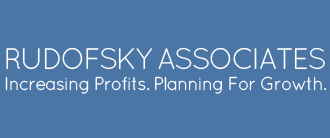Highs and Lows of Angel Investing Returns Revealed
 3M Company published the game Stocks and Bonds in 1964. It is a stimulated stock market played out over a 10-year period, where the stock prices of fictional companies such as Metro Properties, Growth Corp., and Stryker Drilling oscillate up and down, determined by the roll of two dice, and the special events described by 36 playing cards. I was overjoyed when the game showed up as my birthday present when I turned 14, and was content playing it for a year or two, choosing the stocks more or less at random, but finally, I spent an entire afternoon doing the math to find out exactly which of the ten stocks provided the highest expected returns. Fortunately, it was a pretty close horse race between three different stocks, as far as which one provided the best return, so the game wasn’t ruined, and I still had many enjoyable hours ahead playing Stocks and Bonds with children, once they became teenagers.
3M Company published the game Stocks and Bonds in 1964. It is a stimulated stock market played out over a 10-year period, where the stock prices of fictional companies such as Metro Properties, Growth Corp., and Stryker Drilling oscillate up and down, determined by the roll of two dice, and the special events described by 36 playing cards. I was overjoyed when the game showed up as my birthday present when I turned 14, and was content playing it for a year or two, choosing the stocks more or less at random, but finally, I spent an entire afternoon doing the math to find out exactly which of the ten stocks provided the highest expected returns. Fortunately, it was a pretty close horse race between three different stocks, as far as which one provided the best return, so the game wasn’t ruined, and I still had many enjoyable hours ahead playing Stocks and Bonds with children, once they became teenagers.
Although I am no longer playing Stocks and Bonds, I do from time to time help entrepreneurs seeking funding from angel investors, and I’m often asked what kind of returns these angels will want on their investment. So you can imagine my delight in learning of a study done by Ramon DeGennaro and Gerald Dwyer, (and this took a lot more than one afternoon to complete) that analyzed the investment returns of 588 angel-funded companies, spanning the 1972-2007 period.
Their study, titled “Expected Returns to Stock Investments by Angel Investors in Groups” drives home the relationship between type of exit and investor returns. Out of the 588 angel-funded companies in their data set, 408 companies had lasted at least a year, and then reached some sort of exit. Of these 408, the 56 that went IPO, (i.e., issued stock to the public through an Initial Public Offering) were the stars, with average annual return to investors of 93%. Another 180 companies were bought out privately, and their investors did almost as well, with an average annual return of 84%. However, 114 companies in the study ceased operating, and their investors were nearly wiped out, with a negative annual return of 93%. The blended Internal Rate of Return to investors in all 408 companies was 33.7%, but importantly, this did not include the results from the 180 companies that never reached any kind of exit, and were probably under-performers.
This terrific study helps explain why astute investors will always probe concerning exit strategy, and why they are also always concerned about the risk of the entrepreneur running out of cash before reaching break even, two things that weren’t concerns when playing my old childhood Stocks and Bonds game. It also explains why entrepreneurs seeking angel funds need to be able to demonstrate that their company has the potential to yield an internal rate of return to investors of 35% or hopefully even more: because investors need that kind of return on the winners to offset the losses from the ones that inevitably fail.


